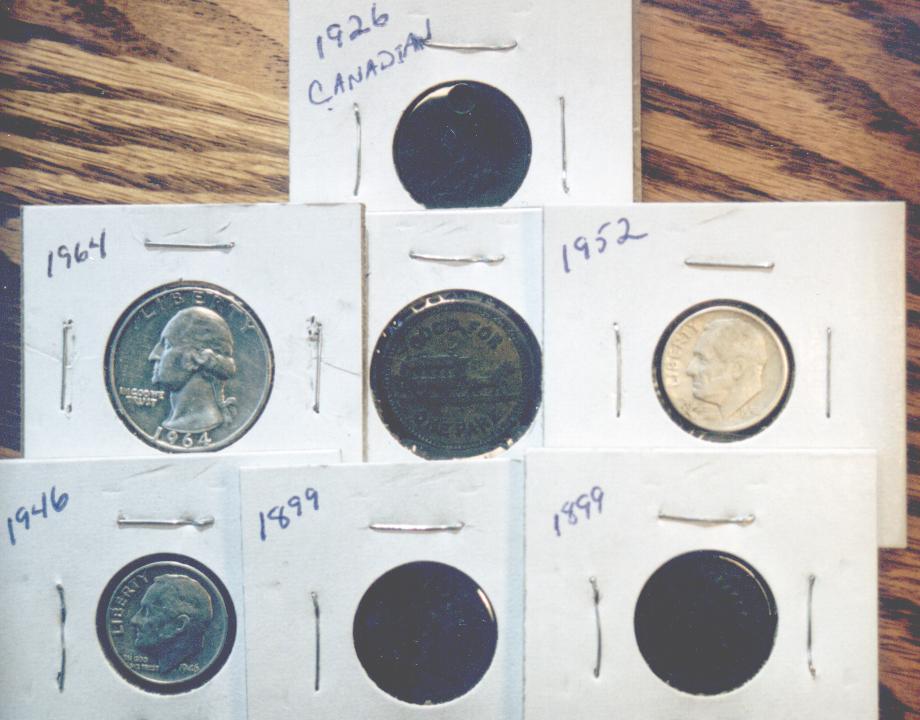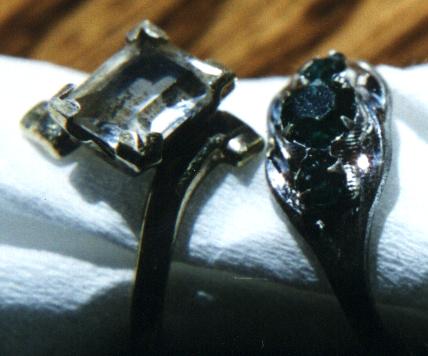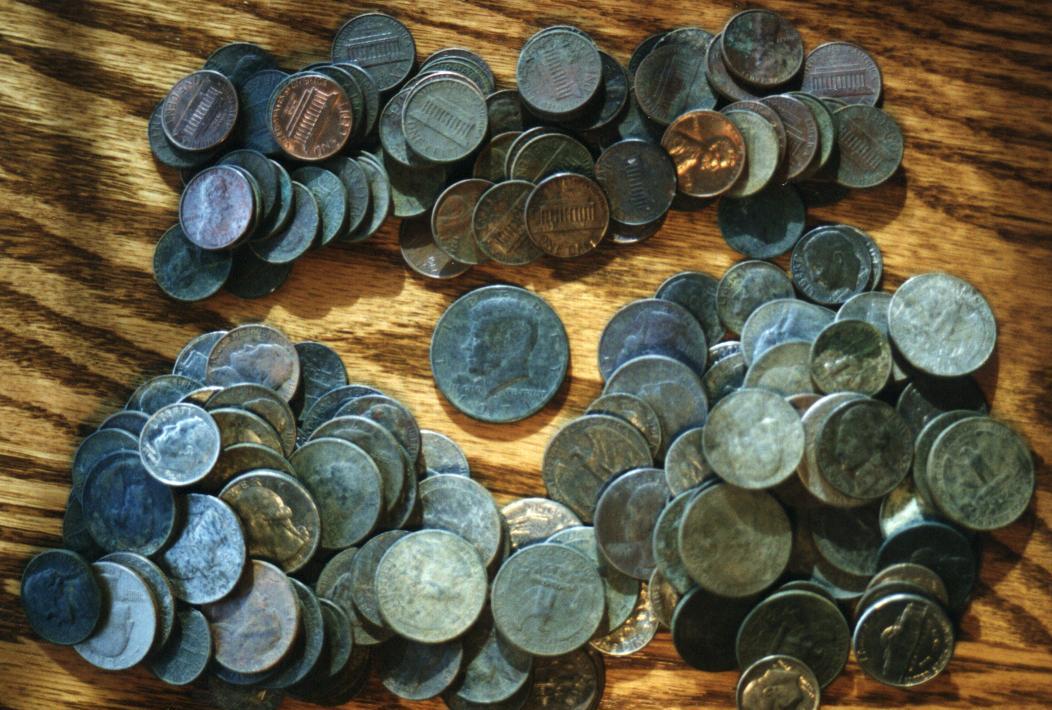
|
Reprinted with written permission from People's Publishing, Inc. From Oct. 1997 Western & Eastern Treasures magazine, pages 60 - 61
Pickwick Pickin's
 Metal detecting in Pickwick, MN has been my pastime for the last two years. I was raised from childhood in this great town of about 200 people. It has grown a little in the last 40+ years, but the older homes are still standing with the help of some modifications--an addition here, some reinforcements there. The Pickwick Mill was erected in 1854 and has since shut down. It has gone through the busy times of grinding flour during the Civil War 24 hours a day, to the not-so-busy days of grinding feed for livestock, to what is now a tourist attraction.
Metal detecting in Pickwick, MN has been my pastime for the last two years. I was raised from childhood in this great town of about 200 people. It has grown a little in the last 40+ years, but the older homes are still standing with the help of some modifications--an addition here, some reinforcements there. The Pickwick Mill was erected in 1854 and has since shut down. It has gone through the busy times of grinding flour during the Civil War 24 hours a day, to the not-so-busy days of grinding feed for livestock, to what is now a tourist attraction.
The little town of Pickwick sprang up around a lake formed by damming the small creek that winds through the valley. It is a pleasant and peaceful place in which to grow up. In the past, I knew almost every individual in the entire town, but now I've lost touch. There are new houses springing up, with the new families moving in or out of the community. However, the people that I do know let me frequently detect their properties, and I still have a long way to go to cover the sites available.
I contacted Mr. and Mrs. Dean Suffrins to see if I could netal detect the softball field and the large yard around their house. Permission was granted instantly, because we have known each other since our younger years. It had been a rather dry summer, so I figured that the small holes I dug to retrieve coins would probably turn brown. I cautioned Dean about it, as I didn't want to ruin his yard with the telltale brown spots that are a detectorist's nightmare. Dean said that he didn't care too much about it, because the moles and the foot traffic to the ballfield usually left their own types of trails anyway. So, I started out detecting within the week.
 Starting in the ballfield area was a good choice. It gave me time to become accustomed to the ground and the White's Eagle Spectrum. I know that any coins found would likely be of the clad variety, because the ballfield was a pasture for quite a few years, and cattle don't have many coins on them. It's been a busy field for the past 25 or more years, with the annual celebrations for Pickwick Mill Days, Pickwick Volunteer Fire Department Chicken-Q's, assorted fundraisers, and softball tounaments.
Starting in the ballfield area was a good choice. It gave me time to become accustomed to the ground and the White's Eagle Spectrum. I know that any coins found would likely be of the clad variety, because the ballfield was a pasture for quite a few years, and cattle don't have many coins on them. It's been a busy field for the past 25 or more years, with the annual celebrations for Pickwick Mill Days, Pickwick Volunteer Fire Department Chicken-Q's, assorted fundraisers, and softball tounaments.
The coins were plentiful and good practice for me and my machine. I think I averaged $4-5 worth of coins in the 2-3 hours a day when I was there. Of course, the area had its abundant share of pulltabs and bottle caps, but with the display on the White's I soon was able to distinguish good targets from the bad ones. On a couple of occasions, I even switched to a smaller coil, which enabled me to find those "side-by-side" targets which I'm sure drive everyone crazy. I have purchased 4", 6", and 8" coils, using the standard 9-1/2" coil most frequently for additional depth.
I kept in touch with the Suffrins, each time they were available, to ask them if there were any problems with what I was doing. Any complaints would have made me stop and wait for moister weather before continuing to search the area around their house. When I asked them if they had any cause to have me stop, they stated that they couldn't even tell that I had started. It's nice to know you've done such a good job of recovery that the owners can't tell you were there.
Starting with the front yard, I found a few Wheat cents, which was encouraging, and a token from LaCrosse, WI. It is brass, bears the image of a horse-drawn trolley, and states, "GOOD FOR ONE FARE." One area of the yard seemed to have more coins scattered around than in others. In one spot I found two pennies, two nickels, two dimes, and three quarters, all clad and dating around 1976. Maybe it was some kid's lunch money, because it was in the area of the school bus stop, and where the school busses are cleaned.
The side yard held its share of coins, but not as many clads. More Wheat cents, a couple of silver dimes, two rings, and two Indian Head cents, both dating 1899. Next to the barn I found a Kennedy half (my first half dollar), a 1926 Canadian cent holed for a necklace, two more rings, and a 1964-D silver quarter. I was able to determine the approximate age of the coins even before I dug them up, because all the coins prior to 1964, registered 5" or more on the depth indicator, and the new clad coinage about 3" and up.
 When I completed my search of the yard, I reported in to Dean with the results of my efforts. The rings I intend to show to his wife Beverly, to see if any of them look familiar to her. If so, she can have them back. I found over 200 coins (dating from 1899 to 1995), four rings (two sterling), three keys, and one token. I offered to give the Suffrins half of anything that I had found, but they refused and said that it was great just to see what was there.
When I completed my search of the yard, I reported in to Dean with the results of my efforts. The rings I intend to show to his wife Beverly, to see if any of them look familiar to her. If so, she can have them back. I found over 200 coins (dating from 1899 to 1995), four rings (two sterling), three keys, and one token. I offered to give the Suffrins half of anything that I had found, but they refused and said that it was great just to see what was there.
Because of the dry soil, I asked if I could come back in the spring of the year to see if I could find those older, deeper coins, that I know are there. The words, "Sure, come back anytime!" made me realize that if you are honest and do a good job of recovering your targets, you can return to an area time and time again to recover those deeper, more interesting items. As for the ballfield, I would guess that there are 100 or more coins, with more being added almost daily, to be recovered yet. I've just "scratched the surface," and my next trip to Pickwick is just around the corner.